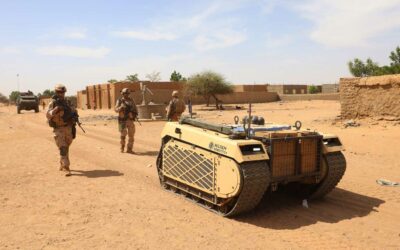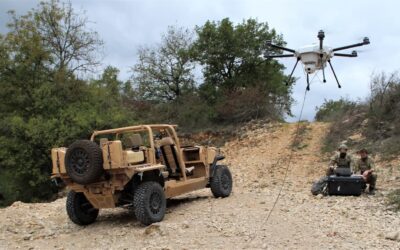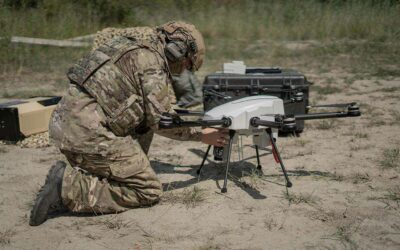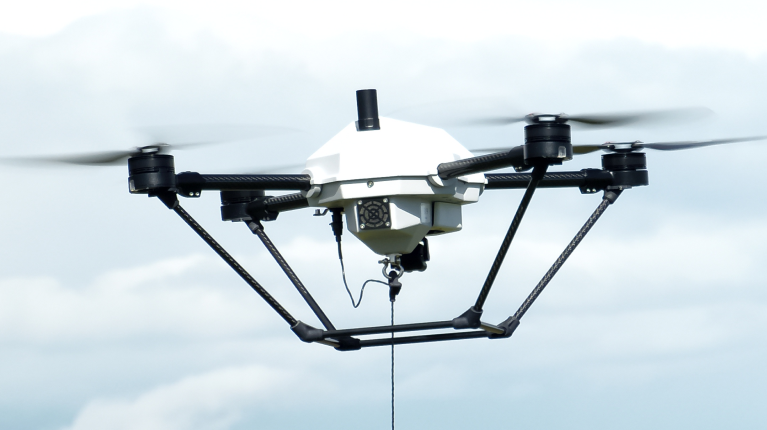5 Ways Drones Enhance Military Security

Garrett Connolly
In the ever-evolving landscape of military operations, ensuring soldier and military safety remains an absolute priority. The integration of drones into military strategies is revolutionizing how nations approach security concerns and battlefield tactics. We explore how UAVs, including tethered drones, are improving military security in the USA and worldwide.
Enhanced Reconnaissance and Situational Awareness For Military Security
One of the fundamental roles of drones in military operations is providing real-time information, surveillance, and reconnaissance (ISR). Equipped with advanced sensors and cameras, these military drones can survey hostile territories, offering valuable insights without exposing soldiers to direct danger.
For instance, these systems can protect units during nighttime operations, for military safety. While soldiers rest, these drones, some equipped with AI technology, can remain vigilant and monitor for any potential threats.
The AI integration allows the drone to analyze and signal any suspicious activity. It allows to reduce the need for extensive human surveillance teams and reducing manpower workload.
Utilizing drones in these environments also helps overcome the traditional challenge of line-of-sight restrictions. With their elevated vantage point they provide a broader field of view, which is vital in terrains where natural or man-made obstacles use to obstruct line-of-sight.
This capability is especially beneficial in urban warfare scenarios, where buildings and narrow streets can limit ground-level visibility.
Regarding tethered drones, they can fly for several hours consecutively, which is one of their impressive features. These systems are great for long missions because they constantly watch and never stop, effectively enhancing military security.
Military drones for ISR operations enhance constant surveillance, gather vital intelligence, and help safeguard military units. These systems are particularly beneficial during nighttime rest or in challenging terrains, for military security.

Improved Medical Response and Rescue Operations for Military Security and Operations
Drones play a crucial role in war, medicine, and rescue missions. They can provide rapid assistance that significantly impacts the survival and recovery of injured individuals. They can improve military security by swiftly locating and assessing injured soldiers in combat zones.
When equipped with thermal sensors, these drones can detect immobile individuals, even in low visibility conditions or challenging terrains. This capability is particularly crucial in search and rescue operations, allowing for rapid identification of soldiers in need of urgent medical attention.
In addition to reconnaissance, drones are revolutionizing the delivery of medical supplies. They can carry essential medical equipment and medications to injured personnel in areas inaccessible by traditional means. This fast system makes sure soldiers get quick care, which can be the deciding factor between life and death in emergencies.
Enhanced Soldier Safety in Military Bases
The unique advantage of tethered drones in this situation lies in their ability to remain aloft for extended periods. This continuous presence in the sky ensures that any unusual activity within or around the base is quickly detected and addressed, significantly enhancing the safety of soldiers on the ground, as well as military security.
One of the key aspects of tethered drones is their operational altitude. These drones can fly up to 300 feet high and can monitor large areas that ground-based surveillance cannot cover. This elevated vantage point allows for comprehensive monitoring of the base’s perimeter, as well as critical infrastructure, offering a strategic advantage in preempting potential security breaches.
Beyond standard camera surveillance, operators can equip drones with a variety of payloads to suit diverse battlefield use cases. For instance, they can carry IMSI catchers, which are instrumental in intelligence gathering by intercepting mobile phone communications. This capability is crucial for identifying and tracking unauthorized mobile devices in sensitive areas, thereby bolstering base security.
They can also serve as telecommunications relays when ground communication networks become compromised or non-existent. By establishing a temporary secure network, they enhance communication capabilities exponentially.
Drones can be used with different payloads in order to suit many operational needs. Whether it’s electronic surveillance, signal jamming, or other specialized military applications, they can adapt to provide tailored solutions and meet the specific security needs of a military base, which makes them invaluable asset in modern military security and operations.
Reduced Risk in Dangerous Military Operations
The use of drones in modern military strategy represents a pragmatic shift firmly rooted in the imperative of soldier safety. These unmanned systems not only reduce the physical risk to personnel but also provide a cost-effective alternative to deploying human teams in dangerous scenarios.
The stark contrast between the cost of human life and machinery cannot be overstated. While the loss of a drone in a failed mission is financially impactful, it pales in comparison to the irreplaceable loss of human lives.
Drones allow military strategists to assess dangerous situations from a safe distance, and provide real-time data and analytical insights. This enables commanders to deploy the right resources and personnel for each specific mission.

Support in Tactical Telecommunications Operations For Military Security
In the intricate web of modern military operations, the role of drones in facilitating tactical communications is pivotal. These systems serve as high-altitude communication relays, providing a critical link between various units engaged in complex operations, for military security.
For instance, in scenarios where ground units operate in rugged terrains with limited direct line-of-sight communication, unmanned systems can bridge the gap. They can be deployed to hover over such areas, ensuring that radio signals are relayed effectively between units, command centers, and support teams.
This continuous aerial relay capability is particularly crucial during operations that involve multiple teams spread out over a large area, or in environments with various line of sight obstacles.
Additionally, some systems can be equipped with advanced communication payloads, such as encrypted data links, which are vital for secure transmission of sensitive information. In operations where stealth and data security are paramount, these features ensure that critical intelligence is shared without the risk of interception or compromise.
This level of integration into military tactical operations has revolutionized battlefield communication. Their ability to act as reliable, rapidly deployable communication relays enhances coordination, improves the safety of ground troops and military security, and facilitates informed decision-making.
Conclusion: Advancing Military Security Through Drone Integration
The incorporation of drone technology into military strategies marks a significant leap in ensuring military security. These technological marvels offer numerous benefits, from enhancing situational awareness to optimize battlefield medical response, thereby playing a pivotal role in the modernization of military operations. As military drones technology continues to evolve, their integration into various facets of military logistics and warfare will undoubtedly continue to enhance the safety and operational approach of military personnel worldwide.









